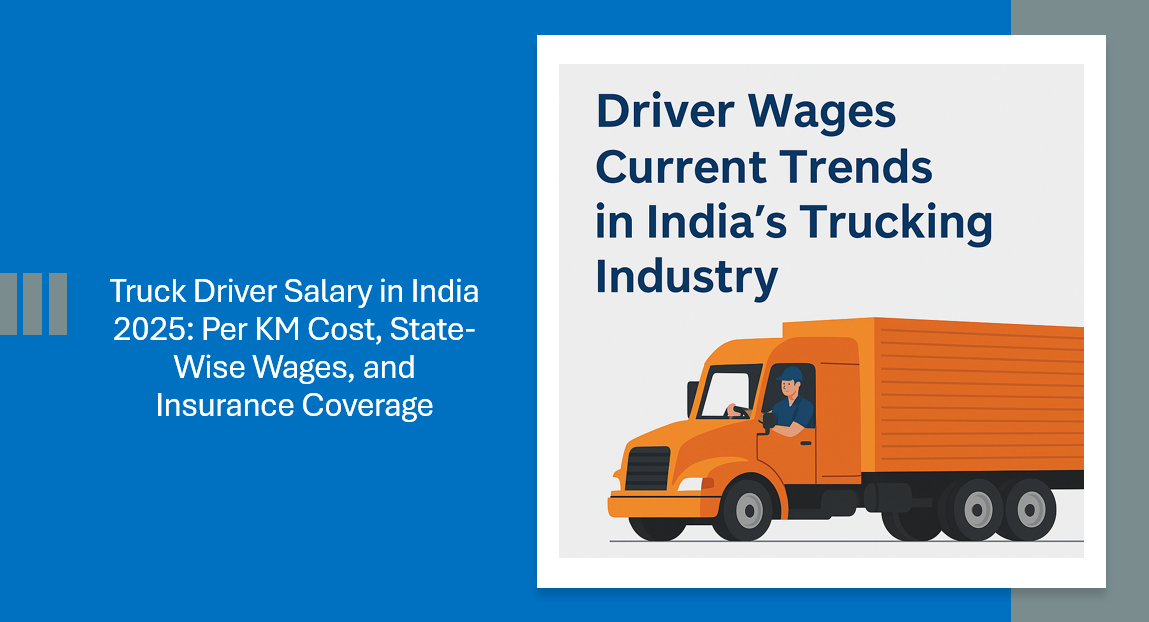Are We Considering Vehicle Age in RFQs for Freight Services?
Table of Contents
- Introduction
- The Importance of Vehicle Age in Freight Competitiveness
- Analyzing Cost Differences: New vs. Old Vehicles
- Impact on Shippers, Customers, and Vehicle Owners
- The Role of OEMs and Safety Considerations
- Incorporating Vehicle Age in RFQs
- Benefits of Fair Freight Comparison
- Conclusion
Introduction
In the world of freight transportation, many factors contribute to competitiveness and pricing. However, one crucial aspect often overlooked in Request for Quotations (RFQs) is vehicle age. This oversight can lead to unfair comparisons and inaccurate pricing, affecting shippers, customers, vehicle owners, and drivers alike. Let’s explore how vehicle age impacts freight competitiveness and why it’s essential for fair freight comparison.
The Importance of Vehicle Age in Freight Competitiveness
Vehicle age plays a significant role in determining the overall cost and efficiency of freight operations. Newer vehicles often come with:
- Improved fuel efficiency
- Lower maintenance costs
- Enhanced safety features
- Better compliance with environmental regulations
These factors directly influence the operational costs and, consequently, the competitiveness of freight services. However, many RFQs fail to consider vehicle age as a key parameter, leading to potentially misleading comparisons.
Analyzing Cost Differences: New vs. Old Vehicles
To understand the impact of vehicle age on freight competitiveness, let’s compare the costs associated with a new (1-year-old) and an older (6-year-old) 40ft triple-axle trailer:
Fixed Monthly Expenses
| Expense Category | 1-Year-Old Vehicle (INR) | 6-Year-Old Vehicle (INR) |
|---|---|---|
| Vehicle Cost (Book Value) | 48,40,000 | 15,85,971 |
| EMI | 1,12,530 | 36,874 |
| Interest on Down Payment | 9,680 | 3,172 |
| Insurance | 5,042 | 1,652 |
| Road Tax | 1,500 | 1,500 |
| Fitness Cost | – | 9,000 |
| Driver + Helper Salary | 50,000 | 50,000 |
| Statutory Expenses | 2,333 | 2,333 |
| Admin Cost | 2,000 | 2,000 |
| GPS | 667 | 667 |
Variable Cost per KM
| Cost Category | 1-Year-Old Vehicle (INR/KM) | 6-Year-Old Vehicle (INR/KM) |
|---|---|---|
| Diesel Cost | 31.33 | 34.81 |
| Toll Cost | 5.00 | 5.00 |
| Tyre Cost | 8.00 | 8.00 |
| Repair & Maintenance | 1.10 | 1.42 |
Freight Rate Comparison for a 200 KM Run (1-Day Trip)
| Vehicle Age | Total Freight Cost (INR) | Per KM Charge (INR) |
|---|---|---|
| 1-Year-Old | 15,100 | 75.50 |
| 6-Year-Old | 13,300 | 66.50 |
This analysis reveals that while older vehicles may appear more competitive in terms of per-kilometer charges, they come with hidden costs and potential risks that are not immediately apparent in RFQs.
Impact on Shippers, Customers, and Vehicle Owners
The absence of vehicle age considerations in RFQs affects various stakeholders:
- Shippers: May end up paying more in the long run due to hidden costs associated with older vehicles.
- Customers: Could experience delays or quality issues due to breakdowns or inefficiencies of older vehicles.
- Vehicle Owners: Those with newer fleets may lose out on contracts despite offering better overall value.
The Role of OEMs and Safety Considerations
Original Equipment Manufacturers (OEMs) continually improve vehicle designs, focusing on:
- Fuel efficiency
- Safety features
- Emission controls
- Driver comfort
Newer vehicles incorporate these advancements, contributing to:
- Reduced accident rates
- Lower carbon footprint
- Better working conditions for drivers
By not considering vehicle age in RFQs, we miss out on these crucial safety and environmental benefits.
Incorporating Vehicle Age in RFQs
To ensure fair freight comparison, RFQs should include:
- Age Specifications: Clear requirements for maximum vehicle age.
- Fuel Efficiency Standards: Minimum fuel efficiency expectations.
- Safety Feature Requirements: Specifications for necessary safety equipment.
- Emission Compliance: Adherence to current environmental norms (e.g., BS VI in India).
By incorporating these factors, RFQs can provide a more accurate basis for comparing freight services.
Benefits of Fair Freight Comparison
Including vehicle age in freight comparisons offers numerous advantages:
- Transparent Pricing: Allows for a true comparison of service costs.
- Improved Safety: Encourages the use of vehicles with better safety features.
- Environmental Benefits: Promotes the use of more fuel-efficient, less polluting vehicles.
- Cost Efficiency: While initial rates may be higher, newer vehicles often prove more cost-effective in the long run.
- Driver Satisfaction: Newer vehicles typically offer better working conditions for drivers.
Conclusion
Considering vehicle age in freight RFQs is crucial for fair comparison and overall industry improvement. It benefits shippers, customers, vehicle owners, and drivers while promoting safety and environmental responsibility. By making this simple yet significant change in our approach to freight procurement, we can drive positive change in the transportation industry.
Learn more about freight competitiveness factors
Explore the latest in vehicle safety technology
Call to Action: Are you a shipper or logistics professional? Consider revising your RFQ process to include vehicle age as a key factor. Share your experiences or challenges in implementing this change in the comments below.








Leave a Reply